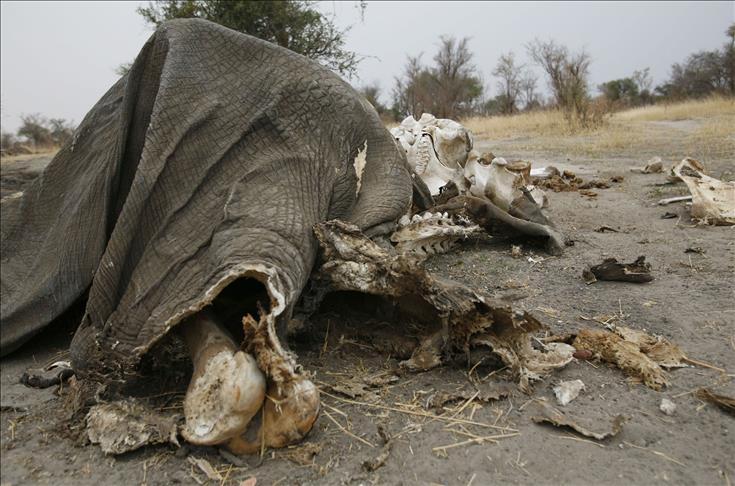
HARARE
Zimbabwe is boiling over the cyanide poisoning of a number of elephants at the Hwange National Park amid blame-trading and conflicting reports as to the exact number of animals killed.
Environmental, Water and Climate Minister Saviour Kasukuwere dismissed as "unprogressive rumors" recent claims that senior government leaders were involved in a poaching ring that preyed on the Hwange National Park.
"If there's anyone who knows the particular government official, they must name them," he told Anadolu Agency. "Bring concrete evidence forward."
"If it's Kasukuwere, say so! Name them. I can't keep commenting on rumors or to people who throw around innuendos," he said.
"Let's stop this nonsense," added the minister. "I need support in fighting this, but we will achieve nothing if we keep on responding to rumors."
He insisted his ministry was intensifying its efforts to marshal the resources needed to ensure that illegal poachers were brought to justice.
"We need helicopters to patrol the park," Kasukuwere said.
An as-yet-unconfirmed number of elephants have been poisoned by poachers in recent months.
Government authorities put the number at 109 elephants, while animal rights activist say the figure is much higher.
"In July, about 300 elephants died from cyanide poisoning. Hunters who flew over the Hwange National Park discovered them," Johnny Rodrigues, chairman of the Zimbabwe conservation task force, told AA.
"The authorities only came in September and by then the number had increased," he said.
Zimbabwe is home to some of Africa's largest elephant herds, with half of the country's estimated 120,000 elephants thought to be at the Hwange National Park.
Currently only 50 rangers patrol the park, which is situated on 14,650 square-kilometers of land.
Wildlife authorities, for their part, say that ten times the number of rangers is needed to adequately patrol the area.
Using the official figures of killed elephants the country has lost over $5million.
According to the Zimbabwe Parks and Wildlife Management Authority, an elephant has a replacement value of $50,000.
According to Cites, an international body devoted to protecting endangered species, at least 17,000 African elephants were killed for their tusks in 2011.
-Cover-up
Poachers reportedly laced the natural salt licks frequented by the elephants with cyanide, a highly poisonous substance.
In what appears to be a well-organized poaching ring, some individuals – yet to be identified – supplied local villagers with the cyanide.
"There are people from the capital city [Harare, about 700km away] who used to come here and give villagers cyanide to kill the elephants," Elliot Tshuma, a villager in Tsholotsho, an area near the national park, told AA.
"After a few days they would come back and collect the tusks," he added.
Villagers who poisoned the elephants and removed their tusks were paid between $20 and $50 for each tusk they produced, according to Tsholotsho locals.
So far, four villagers who live near the park have been convicted for killing the elephants. They were each sentenced to 16 years in prison.
But Rodrigues, the conservationist, said that the masterminds behind the poaching phenomenon generally went unpunished.
"The problem is that a big cover-up is going on," he said.
"Those who have been arrested and convicted are the small fry who are used as scapegoats, while the big and dangerous fish are left untouched," he insisted. "These include politicians and big businesspeople."
-Poisoning fears
Police have given villagers living near the park until the end of October to hand over any cyanide they might have in their possession or face arrest.
Meanwhile, some villagers fear that the poison used to kill elephants could contaminate local water supplies.
"If poachers poisoned water bodies, the cyanide could be a danger to human beings as well," CT Parek, chairman of the chemistry department at the National University of Science and Technology, told AA.
He explained that cyanide was harmful to the body as it blocks oxygen from spreading, meaning that victims stop taking in the oxygen needed for survival.
"The severe effects of cyanide depend on the concentration," noted Parek. "If it is in open watering holes like the Hwange National Park… it is not too much of a problem."
"It becomes a problem if you have a well and poachers drop [cyanide] inside the well and people continue to drink from the water," he added. "But in [an] open system, it's not likely to cause too much damage."
englishnews@aa.com.tr


